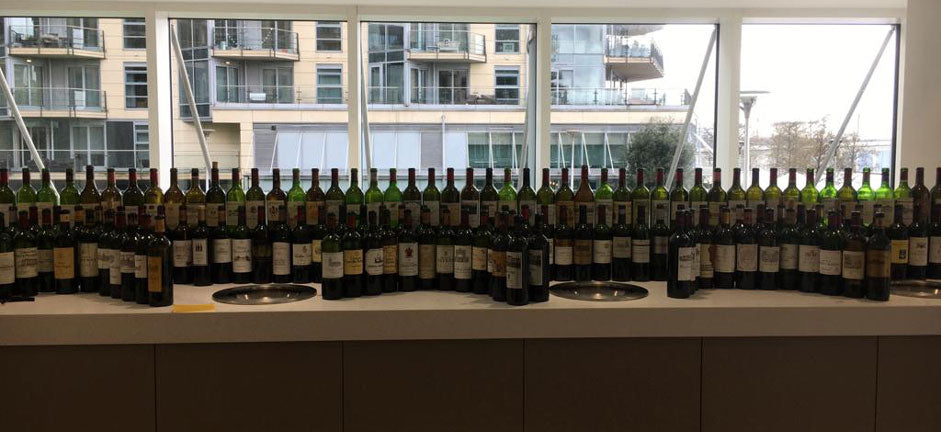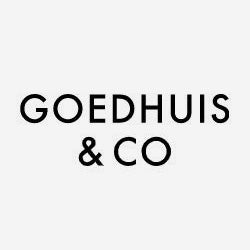
When the 2010 Bordeaux vintage was released it arguably received more acclaim than any other release this century. Markets were buoyant, journalistic influence, most notably that of Robert Parker, was at its apogee and talk was of a vintage of the century, with quality surpassing the extraordinary 2005 vintage. In my vintage report at the time I commented that “if 2009 was a vintage of opulence and accessibility, the 2010s are all about power, intensity and structure, which will most definitely reward patience.”
Last week I attended the annual Southwold tasting, with the excitement of revisiting nearly 200 wines over a two-day period. Amongst our group of 18 tasters were several of the most respected wine journalists and an impressive eight Masters of Wine. The wines are always tasted blind, appellation by appellation, with scores recorded independently to ensure that even the strongest personalities do not influence the results!

Do the wines live up to expectations and will they live as long as our first impressions led us to believe? The answer to both is a resounding yes. It is a vintage where the best estates and finest terroirs have produced sensational wines of exceptional quality. Yes, 2010 was the most expensive vintage on release, but with such prodigious quality Châteaux owners felt justified to raise prices. Many wines flirted with perfect scores, and a handful achieved them.
The consensus was that the finest wines have outstanding potential but outside the classified growths careful selection is required. While 2010’s density and concentration are a strength, there is a danger this can disadvantage the less well-positioned vineyards. These wines sometimes struggled to have sufficient fruit to support their power and tannic core.
We started on the Right Bank with the satellite vineyard regions before progressing to St Emilion and Pomerol. The best of these two appellations showed their heritage and quality, with the average of the top Pomerol wines just pipping those of St Emilion. This is hardly a criticism of St Emilion as the two appellations were well matched with the top four Pomerols averaging 18 or above and the top four St Emilions sitting just below 18.
In Pomerol, Le Pin really lifted my spirits, balancing hedonism with supreme quality. Petrus and Vieux Château Certan were both exceptional. In St Emilion I was hard pushed to separate Canon, Ausone, Cheval Blanc and Figeac; their pedigree and class will ensure they give huge pleasure to Bordeaux lovers for many years. However, a word of caution is needed for some less renowned estates, where I found a surprising degree of maturity and loss of colour. The pronounced alcohol and tannic weight risk a dissonance which I fear will not disappear.
The Pessac Léognan wines are sometimes overlooked but this would be a great shame in 2010 as there are some lovely wines. My two personal favourites are Domaine de Chevalier and Smith Haut Lafitte. Moving northward into the Médoc the story is much the same. The greatest vineyards, those hugging the Gironde, have reached extraordinary heights.
In Margaux the eponymous château was sensational. Palmer, Brane Cantenac and d’Issan performed impressively, but it was the Wertheimer family owned property, Château Rauzan Ségla, that stole the show. The grand vin of this second growth estate was superlative. Its second wine, Ségla, was tasted under two guises, one bottled under cork and the other with screw cap. Interestingly the screw cap won, scoring on average a full two points more than the cork sealed bottle and even outperforming its grand vin neighbours!
In St Estèphe, Châteaux Montrose and Cos d’Estournel fully justified their second growth classification. Lafon Rochet and Phélan Segur reflected excellent value and quality within their price categories. However, the very finest 2010s unquestionably come from the great vineyards of St Julien and Pauillac.
In St Julien the three Léovilles and Ducru Beaucaillou were well matched for quality, yet all with their own distinctive personalities. I must confess a slight bias towards Léoville Las Cases; not a monolithic beast (always a danger in a year such as 2010) but wonderfully poised, restrained and polished. Overall, whilst Talbot was a little awkward, there was not a single wine amongst the classed growths that I would not select for my cellar. Equally important, and to be ignored at your peril, is the less renowned Château Gloria: an overperformer if ever there was one, made by the team at Château St Pierre, and one of the picks of the vintage under £500.

In vintages such as 2010, Pauillac seems to have an unfair advantage. With three first growths in its armoury, it unsurprisingly stole the show on the Left Bank day. Whilst Mouton Rothschild was my favourite, Latour received my second highest score and won the overall tasting for the group. Mouton was a close runner-up and it is heartening to witness the wines from this famous estate competing so admirably with their peers. The Pichons level pegged, both of exceptional quality and true to their individual style: The Baron a little bolder and more robust, while the Lalande was all finesse and purity. However, it was Goedhuis’ two favourite fifth growths that really shone: Châteaux Grand Puy Lacoste and Lynch Bages totally outperformed their classification.

To conclude, 2010 might not be as classic as 2005 nor have the consistency of 2016, but it is distinguished by moments of sheer brilliance. Vintages are often remembered for their exceptions rather than the rule and so it will be for 2010. It is too early to say whether there really is a legendary wine in its midst, but several superlative wines clearly have the potential to be revered in years to come. This was a memorable tasting for all the right reasons and a selection of the best should feature in any Bordeaux-based cellar.
A word on pricing, as mentioned 2010 was the most expensive vintage ever when it was released into the market in Spring 2011. Stock markets were buoyant, credit was plentiful, and the Asian led bull market was at its peak with various wines, though Lafite Rothschild in particular, reaching stratospheric prices in the secondary market. Hence, there were few murmurs when the Chateaux owners released their wines at record levels. However, it was not long into 2011 before prices began to come under pressure and the market turned.
Whilst the intervening years have offered little cheer for those who bought at the time, a decade on, things are looking brighter. Many wines have recovered to their original release prices and a number have increased in value; there are a few wines still lagging but these opportunities are dwindling as this tasting reaffirmed the undoubted quality of the vintage. One you can purchase sure in the knowledge that these are some of the greatest wines Bordeaux has produced and now, at ten years of age, only getting better.
DR Top 20
- Le Pin
- Mouton Rothschild
- Latour
- Margaux
- Petrus
- Canon
- Haut Brion
- La Mission Haut Brion
- Vieux Château Certan
- Ausone
- Léoville Las Cases
- Figeac
- Rauzan Ségla
- Montrose
- Lynch Bages
- Pichon Baron
- Pichon Lalande
- Grand Puy Lacoste
- Ducru Beaucaillou
- Smith Haut Lafitte

Southwold Group Average Top 20
| Latour | 18.81 |
| Mouton Rothschild | 18.45 |
| Eglise Clinet | 18.25 |
| Lafleur | 18.20 |
| Pin | 18.13 |
| VCC | 18.05 |
| Lynch Bages | 17.93 |
| Violette | 17.83 |
| Mission Haut Brion | 17.81 |
| Margaux | 17.79 |
| Pavie | 17.78 |
| Lafite | 17.74 |
| Angelus | 17.73 |
| Petrus | 17.73 |
| Cheval Blanc | 17.65 |
| Haut Brion | 17.64 |
| Figeac | 17.63 |
| Ducru Beaucaillou | 17.45 |
| Forts de Latour | 17.45 |
| Canon | 17.45 |

